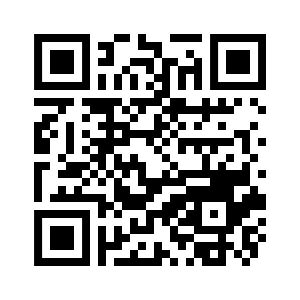Pengaruh Health Concsiousness, Perceived Risk Of Covid-19 dan E-Wom terhadap Intensi Membeli Suplemen Vitamin C
DOI:
https://doi.org/10.33557/mbia.v21i1.1790Keywords:
purchase intention;, health consciousness;, perceived risk of Covid-19;, e-WOMAbstract
Since March 2020, Indonesia has been disrupted by the Covid-19 pandemic that has impacted people's lives in every province, one of which is Jakarta, which has a large population and is the center of the economy and the capital city. This pandemic has forced people to live new and healthier habits, such as purchasing health products to start a healthy lifestyle to protect themselves from Covid-19. This study aims to empirically examine the effect of health consciousness, perceived risk of Covid-19, and e-WOM on the purchase intention of Vitamin C supplements. The research design used is descriptive and conclusive. The population in this study is consumers of vitamin C supplement products in Jakarta. This study used non-probability sampling by using convenience sampling. The number of samples obtained by using Google Form is 200 samples. The measurement of each indicator uses a 5-point-Likert-scale, and the collected data were analyzed using Partial Least Square-Structural Equation Modeling. This study concluded that health consciousness and e-WOM could predict consumers' intention to purchase Vitamin C supplements. Still, the perceived risk of Covid-19 cannot indicate the intent to acquire Vitamin C supplements consumers positively.
Keywords: Purchase intention, health consciousness, perceived risk of Covid-19, e-WOM
Abstrak
Sejak Maret 2020, masyarakat Indonesia telah dilanda oleh pandemi Covid-19 yang sangat berdampak pada kehidupan masyarakat di setiap provinsi, salah satunya di Jakarta, yang memiliki banyak penduduk, merupakan pusat perekonomian dan ibu kota. Pandemi telah memakasa masyarakat untuk memulai kebiasaan yang baru dan lebih sehat, seperti membeli produk kesehatan untuk memulai pola hidup yang sehat dalam rangka melindungi diri dari paparan Covid-19. Tujuan penelitian ini adalah untuk menguji secara empiris pengaruh health consciousness, perceived risk of Covid-19, dan e-WOM terhadap intensi membeli suplemen Vitamin C. Desain penelitian yang digunakan merupakan deskriptif konklusif. Populasi penelitian ini merupakan konsumen produk suplemen Vitamin C di Jakarta. Penelitian ini menggunakan non-probability sampling berupa convenience sampling. Jumlah sampel yang diperoleh dengan menggunakan Google Form sebanyak 200 sampel. Setiap indikator menggunakan skala likert 5 poin dan data yang diperoleh kemudian dianalisis dengan menggunakan metode Partial Least Square-Structural Equation Modeling. Penelitian ini menyimpulkan bahwa health consciousness dan e-WOM dapat memprediksi intensi membeli konsumen suplemen Vitamin C tetapi perceived risk of Covid-19 tidak dapat memprediksi intensi membeli konsumen suplemen Vitamin C secara positif.
Kata kunci: Intensi membeli, health consciousness, perceived risk of Covid-19, e-WOM
References
Agmeka, F., Wathoni, R., & Santoso, A. (2019). The Influence of Discount Framing towards Brand Reputation and Brand Image on Purchase Intention and Actual Behaviour in ecommerce. Procedia Computer Science, 161, 851-858. https://doi.org/10.1016/j.procs.2019.11.192
Aji, H. M., Berakon, I. & Husin, M. M. (2020). COVID-19 and e-wallet usage intention: A multigroup analysis between Indonesia and Malaysia. Cogent Business & Management, 7(1), 1804181. https://doi.org/10.1080/23311975.2020.1804181
Ajzen, I. (1991). The Theory of Planned Behavior. Organizational Behavior and Human Decision Processes, 50(2), 179-211. https://doi.org/10.1016/0749-5978(91)90020-T
Ajzen, I. & Fishbein, M. (1980) Understanding Attitudes and Predicting Social Behavior. Englewood Cliffs, NJ: Prentice-Hall.
Alodokter. 2020. “Cegah Virus Corona dengan Memperkuat Sistem Imun Tubuh”. https://www.alodokter.com/cegah-virus-corona-dengan-memperkuat-sistem-imun-tubuh, diakses tanggal 16 Mei 2022.
Asshidin, N. H. N., Abidin, N. & Borhan, H. B. (2016). Perceived quality and emotional value that influence consumer's purchase intention towards American and local products. Procedia Economics and Finance, 35, 639-643. https://doi.org/10.1016/S2212-5671(16)00078-2
Badan Pusat Statistik. (2022). Jumlah Penduduk Provinsi DKI Jakarta Menurut Kelompok Umur dan Jenis Kelamin 2019-2021. https://jakarta.bps.go.id/indicator/12/111/1/jumlah-penduduk-provinsi-dki-jakarta-menurut-kelompok-umur-dan-jenis-kelamin.html, diakses tanggal 15 Mei 2022.
Bambauer-Sachse, S. & Mangold, S. (2011). Brand equity dilution through negative online word-of-mouth communication. Journal of Retailing and Consumer Services, 18(1), 38-45. https://doi.org/10.1016/j.jretconser.2010.09.003
Barauskaite, D., Gineikiene, J., Fennis, B. M., Auruskeviciene, V., Yamaguchi, M. & Kondo, N. (2018). Eating healthy to impress: How conspicuous consumption, perceived selfcontrol motivation, and descriptive normative influence determine functional food choices. Appetite, 131(1), 59-67. https://doi.org/10.1016/j.appet.2018.08.015
Chevalier, J. & Mayzlin, D. (2006). The effect of word of mouth on sales: online book reviews. Journal of Marketing Research, 43(3), 345–354. https://doi.org/10.1509/jmkr.43.3.345
Chu, H. & Liu, S. (2021). Integrating health behavior theories to predict American’s intention to receive a COVID-19 vaccine. Patient Educ Couns. 104(8), 1878–86. https://doi.org/10.1016/j.pec.2021.02.031.
Detik. (2020). “Geger Corona, Vitamin di Apotek Ludes Diborong”. https://finance.detik.com/berita-ekonomi-bisnis/d-4963794/geger-corona-vitamin-di-apotek-ludes-diborong, diakses tanggal 16 Mei 2022.
Ghozali, I. 2012. Aplikasi Analisis Multivariate dengan Program IBMSPSS.Yogyakarta: Universitas Diponegoro.
Han, H., Yu, J., & Kim, W. (2019). An electric airplane: Assessing the effect of travelers’ perceived risk, attitude, and new product knowledge. Journal of Air Transport Management, 78, 33–42. https://doi.org/10.1016/j.jairtraman.2019.04.004
Hair, J. F., Black, W. C., Babin, B. J., & Anderson, R. E. (2014). A primer on partial least square structural equation modelling (PLS-SEM). California: SAGE Publications, inc.
Hair, J. F., Black, W. C., Babin, B. J., & Anderson, R. (2019). Multivariate data analysis (8th ed.). Massachusetts: Cengage.
Hasan, M. K., Ismail, A. R., & Islam, M. F. (2017). Tourist risk perceptions and revisit intention: A critical review of literature. Cogent Business and Management, 4(1), 1–21. https://doi.org/10.1080/23311975.2017
Henseler, J., Ringle, C. M., & Sinkovics, R. R. (2009). The Use of Partial Least Squares Path Modeling In International Marketing. New Challenges to International Marketing Advances in International Marketing, 20, 277–319. https://doi.org/10.1108/S1474-7979(2009)0000020014
Hoque M. Z., Alam M. N., & Nahid K. A. (2018). Health Consciousness and Its Effect on Perceived Knowledge, and Belief in the Purchase Intent of Liquid Milk: Consumer Insights from an Emerging Market. Foods, 7(9), 150. https://doi.org/10.3390/foods7090150
Ilhamalimy, R. R. & Ali, H. (2021). Model perceived risk and trust: E-WOM and purchase intention (the role of trust mediating in online shopping in Shopee Indonesia). Dinasti International Journal of Digital Business Management, 2(2), 204–221. https://doi.org/10.31933/dijdbm.v2i2.651
Jordan, G., Leskovar, R., & Marič, M. (2018). Impact of fear of identity theft and perceived risk on online purchase intention. Organizacija, 51(2), 146–155. https://doi.org/10.2478/orga-2018-0007
Keni, K. & Wilson, N. (2021). The Role of Consumers’ Perceived Risk and Sales Promotion Towards Consumers’ Intention to Visit in the Fast-Food Restaurant Sector During the Current COVID-19 Pandemic. in Proceedings of the Ninth International Conference on Entrepreneurship and Business Management (ICEBM 2020), 10-17. https://doi.org/10.2991/aebmr.k.210507.002
Kim, K. Y., Yim, M. Y. C., Kim, E. A. & Reeves, W. (2021). Exploring the optimized social advertising strategy that can generate consumer engagement with green messages on social media. J. Res. Interact. Mark, 15(1), 30–48. https://doi.org/10.1108/JRIM-10-2019-0171
Kristinawati, A. & Keni, K. (2021). Pengaruh Brand Image, Perceived Quality, dan eWOM terhadap Purchase Intention Mobil di Jakarta. Jurnal Manajemen Bisnis dan Kewirausahaan, 5(5), 524-529. https://doi.org/10.24912/jmbk.v5i5.13305
Lee, J., Park, D. H. & Han, I. (2011). The different effects of online consumer reviews on consumers’ purchase intentions depending on trust in online shopping malls: an advertising perspective. Internet Research, 21(2), pp. 187-206. https://doi.org/10.1108/10662241111123766
Lin, S. (2014). Relationship between Nutritional Labeling and Consumer Purchase Intention. Master’s Thesis, Wenzao Ursuline University of Languages, Kaohsiung, Taiwan.
Ling, T., Hoo, W., Hong, A., & Yew, L. (2019). Factor Affecting Purchase Intention of Health Supplement in Malaysia. INTI Journal, 2019(5), 2600-7920.
Mai, R., & Hoffmann, S. (2012). Taste lovers versus nutrition fact seekers: How health consciousness and self-efficacy determine the way consumers choose food products. Journal of Consumer Behaviour, 11, 316–328. https://doi.org/10.1002/cb.139
Malhotra, N. K. (2015). Essentials of marketing research: A hands-on orientation. New York: Pearson.
Marafon, D. L., Basso, K., Espartel, L. B., de Barcellos, M. D., & Rech, E. (2018). Perceived risk and intention to use internet banking: The effects of self-confidence and risk acceptance. International Journal of Bank Marketing, 36(2), 277–289. https://doi.org/10.1108/ IJBM-11-2016-0166
Michaelidou, N. & Hassan, L. M. (2008). The role of health consciousness, food safety concern and ethical identity on attitudes and intentions towards organic food. Int. J. Consum. Stud, 32, 163–170. https://doi.org/10.1111/j.1470-6431.2007.00619.x
Neurosensum. (2021). Indonesian Consumer Trends 2021. https://neurosensum.com/indonesian-consumer-trends-2021/, diakses tanggal 15 Mei 2022.
Park, D. H. & Lee, J. (2008). eWOM overload and its effect on consumer behavioral intention depending on consumer involvement. Electronic Commerce Research and Applications, 7(4), 386–398. https://doi.org/10.1016/j.elerap.2007.11.004
Prasad, A., Strijnev, A. & Zhang, Q. (2008). What can grocery basket data tell us about health consciousness? International Journal of Research in Marketing, 25(4), 301-309. https://doi.org/10.1016/j.ijresmar.2008.05.001
Rittichainuwat, B. N., & Chakraborty, G. (2009). Perceived travel risks regarding terrorism and disease: The case of Thailand. Tourism Management, 30(3), 410–418. https://doi.org/10.1016/j.tourman.2008.08.001
Sekaran, U. & Bougie, R. (2016). Research Method for Business (7th ed.). New Jersey: Wiley.
Shukla, P. (2011). Impact of interpersonal influences, brand origin and brand attitude on luxury purchase intentions: measuring inter functional interactions and a cross-national comparison. Journal of World Business, 46(2), 242-252. https://doi.org/10.1016/j.jwb.2010.11.002
Thilina, D. K. & Gunawardane, N. (2019). The effect of perceived risk on the purchase intention of electric vehicles: An extension to the Technology Acceptance Model. International Journal of Electric and Hybrid Vehicles, 11(1), 73. https://doi.org/10.1504/ijehv.2019.10020148
Vasan, M. (2018). Effect of environment concern and health consciousness of consumers on purchase intention of green products: a path analytic approach. International Journal of Pure and Applied Mathematics, 119(15), 2215-2220.
Ventre, I. & Kolbe, D. (2020). The impact of perceived usefulness of online reviews, trust and perceived risk on online purchase intention in emerging markets: A Mexican perspective. Journal of International Consumer Marketing, 32(4), 287–299. https://doi.org/10.1080/08961530.2020.1712293
Wibowo, A. (2015). Pengaruh elektronik word of mouth dan brand image terhadap purchase intention pada konsumen smartphone samsung yang berbasis android. Jurnal Ilmu Manajemen, 12(1), 71-78. https://doi.org/10.21831/jim.v12i1.11743
Yaylc, A. & Bayram, M. (2012). E-WOM: the effects of online consumer reviews on purchasing decisions. International Journal of Internet Marketing and Advertising, 7(1), 51-64. https://doi.org/10.1504/IJIMA.2012.044958
Yeon K. H. & Chung, J. (2011). Consumer purchase intention for Organic Personal Care Products. Journal of Consumer Marketing, 28(1), 40–47. https://doi.org/10.1108/07363761111101930
Yunus, N. S. N. M. & Rashid, W. E. W. (2016). The Influence of Country-of-origin on Consumer Purchase Intention: The Mobile Phones Brand from China. Procedia Economics and Finance, 37, 343-349. https://doi.org/10.1016/S2212-5671(16)30135-6
Zhang, X., Liu, S. Chen, X., Wang, L., Gao, B. & Zhu, Q. (2018). Health information privacy concerns, antecedents, and information disclosure intention in online health communities. Information & Management, 55(4), 482–493. https://doi.org/10.1016/j.im.2017.11.003
Downloads
Published
Issue
Section
License
MBIA Universitas Bina Darma Jalan Jend. A. Yani 13 Ulu Palembang 
MBIA by http://journal.binadarma.ac.id/index.php/mbia is licensed under a Creative Commons Attribution-ShareAlike 4.0 International License.











